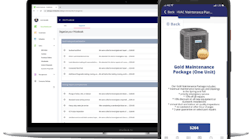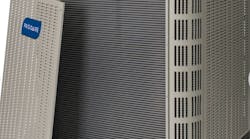Supply house managers balance their time between reactive and proactive work depending on customer activity, peak seasonal cycles and available time and manpower resources. Most supply house counter operations find themselves in a reactive stance for many reasons. Perhaps the uppermost reason for this is that management doesn't always grasp how meaningful proactive work can be. This reactive phenomenon arises mostly due to an ongoing plethora of demands from both internal and external customers.
The most obvious example of reactive work occurs first thing in the morning. It goes like this: Some contractors line up at your counter early in the morning to buy equipment and supplies for the day's workload. The contractor who has not invested enough time in creating a complete list of the day's required equipment is the one who will return in a few hours — thereby consuming more of everyone's time. This mutual waste of time causes a counter salesperson to react to an additional event — hence the reactive stance.
Perhaps counter professionals should invest a little time in being proactive by asking the contractor a few qualifying questions during each sale. The qualifying questions, regarding an installation and the application of material, make the contractor consider the stages of his upcoming work, thereby creating a complete mental checklist. This type of qualification is a value-added experience with a mutual benefit. Both the contractor and the supplier win because the contractor averts a trip back to your supply house and the counter professional saves himself from reacting to a second event, which is completely preventable. Needless to say, the counter salesperson delivers the perception of a valued resource to the contractor.
Another proactive stance includes surfacing which is hidden sales opportunities by making follow-up calls. Here is how it works: A supply house professional phones a contractor to follow up on a recent order; then the contractor interrupts and says, “While I have you on the phone, I'd like to order ten 6-inch, 90-degree sheet metal elbows, three line sets, a power vent motor …” In this scenario, the supply house professional just stumbled upon a new order because he made it easy for the contractor to buy. Contractors almost always need more material and the supply house that is most proactive will most likely get the order.
There is no reason for a company to view its sales counter as reactive, because this stance diminishes the true value that a well-managed supply house can yield. World-class supply house operations maximize their use of manpower resources to maintain a good balance between the reactive and proactive workload.
There are similarities between the reactive and proactive model in comparison to the pain-versus-gain model. The human reaction to pain (reactive) is to end it as soon as possible — hence, there is little time reserved for any proactive (gain) work. The proactive counter model includes gain in the form of efficiency, follow up and enhanced customer relationships — but only if the manager chooses to manage and allocate enough time and manpower resources.
Some supply house managers don't know when to divert resources from reactive to proactive simply because they are too far away from the activity. A manager who is central to these activities knows when to shift manpower resources from reactive to proactive work and vice versa. In addition, a manager who is close to the activity must be courageous about SOP (standard operating procedure) adherence. Managing a busy supply house is not for cowards — mental toughness and an unwavering standard of excellence are paramount.
Proactive work includes outbound follow up on recent orders, measuring customer satisfaction and anything else that enhances the business relationship and adds value. Based on activity, management can sense the rhythm and momentum of the operation, and then decide when to shift resources.
Steve Coscia helps HVACR companies make more money through increased customer retention, improved upselling and reduced on-the-job stress. He just produced the Contractor Soft Skills DVD, which is available at www.coscia.com. A best-selling author and 20-year customer service specialist, Steve presents keynote speeches and facilitates HVACR customer service workshops. Contact him at 610/853-9836 or [email protected].





